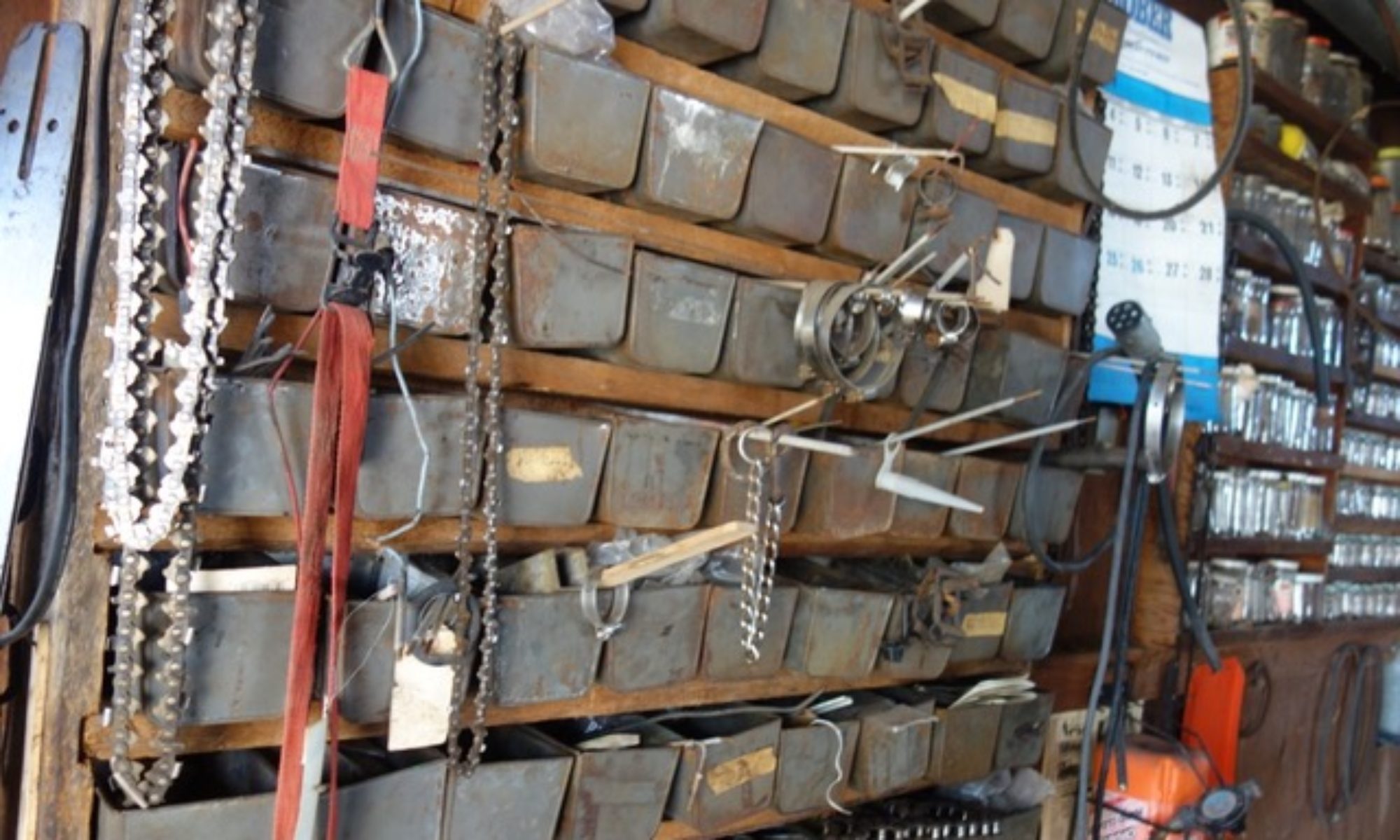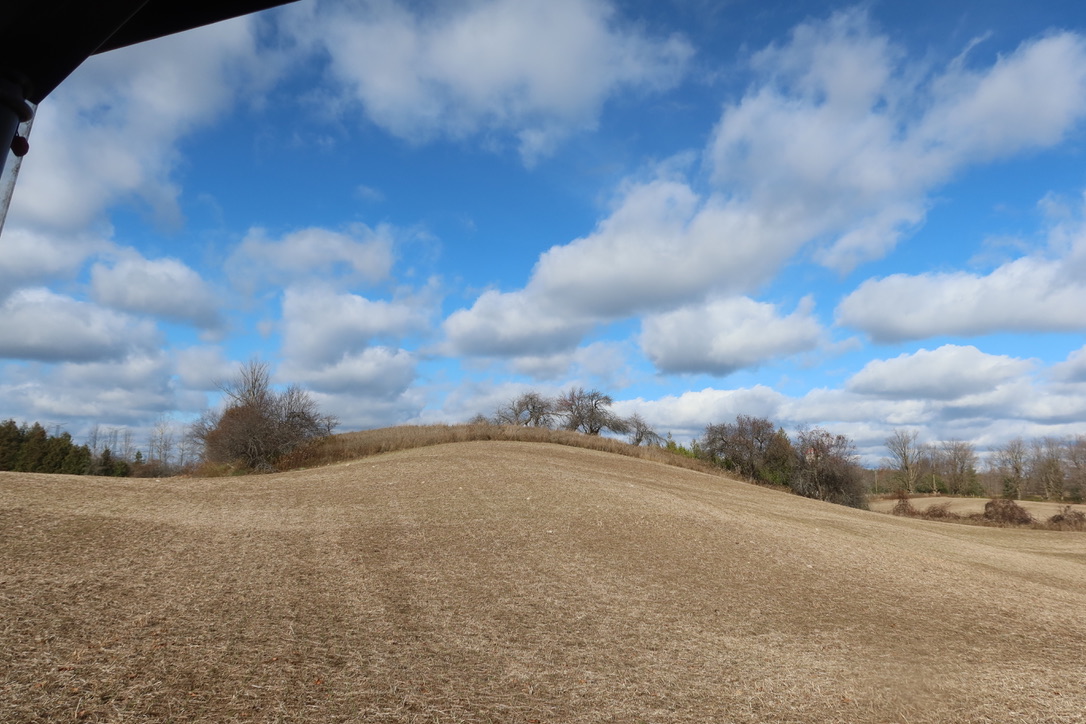
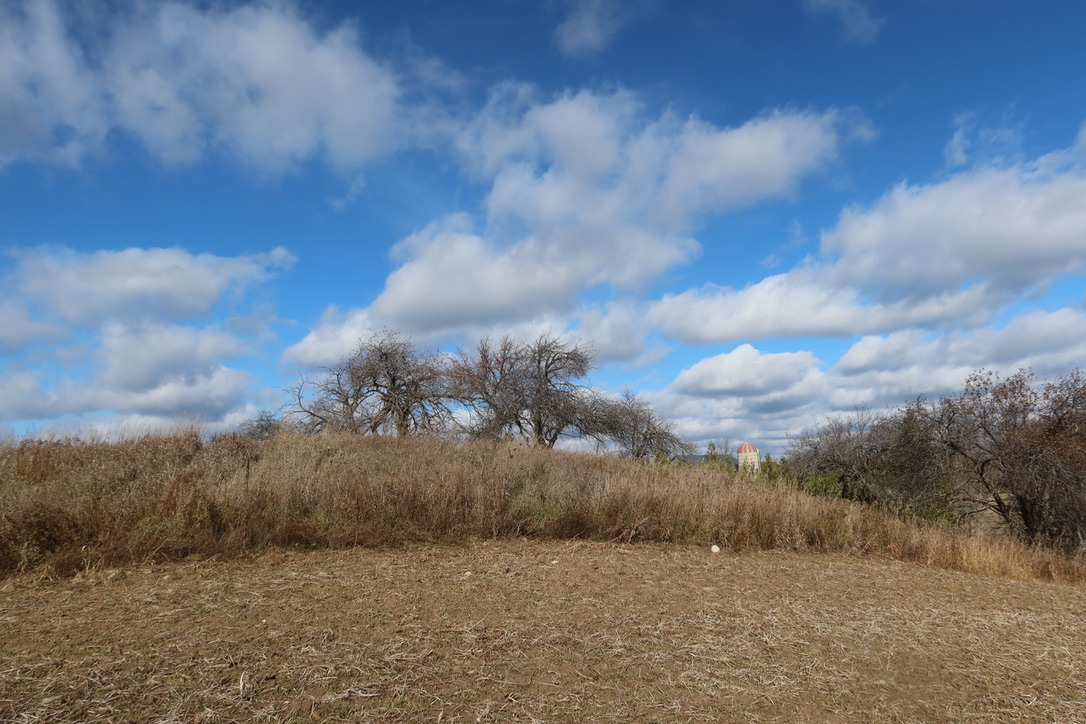
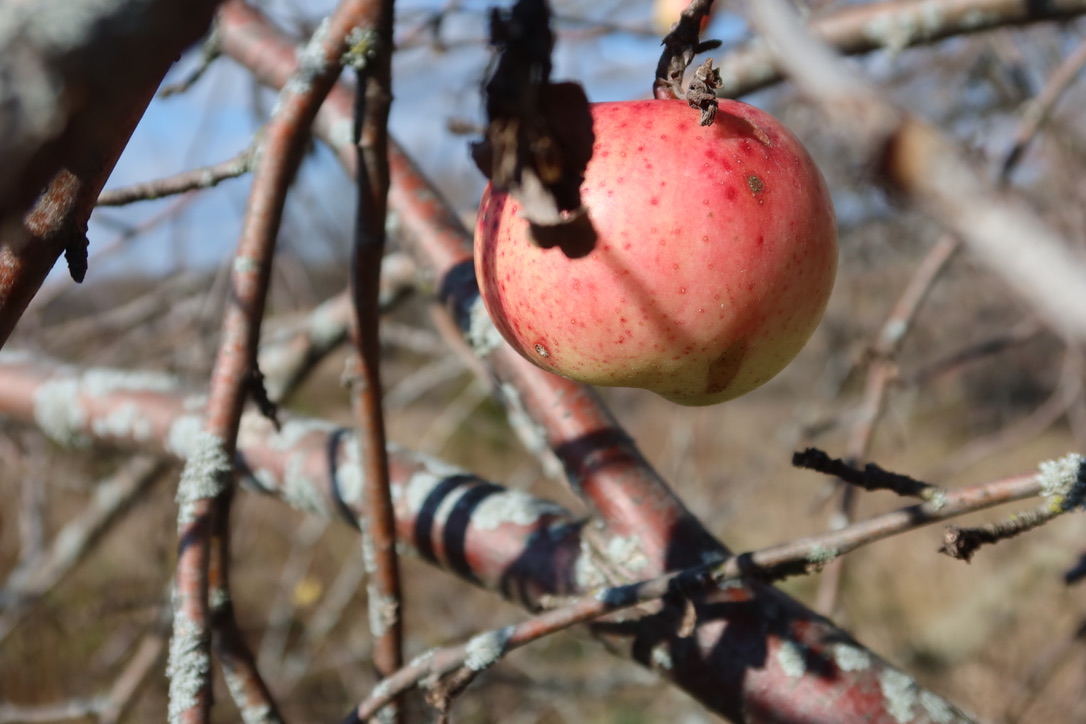
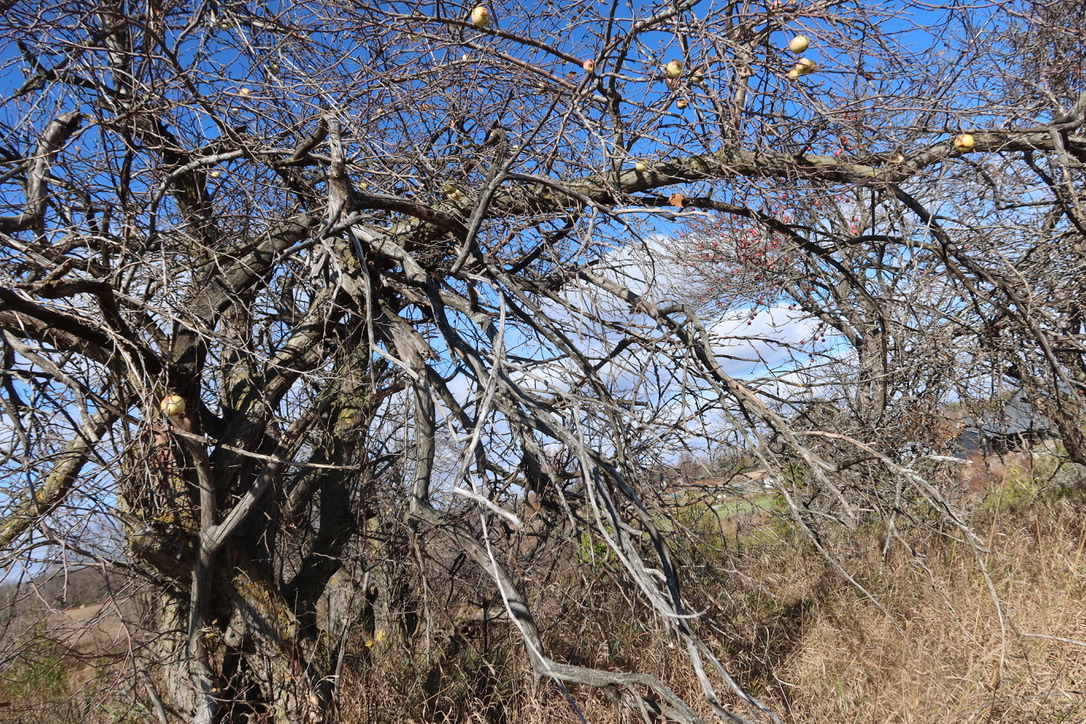
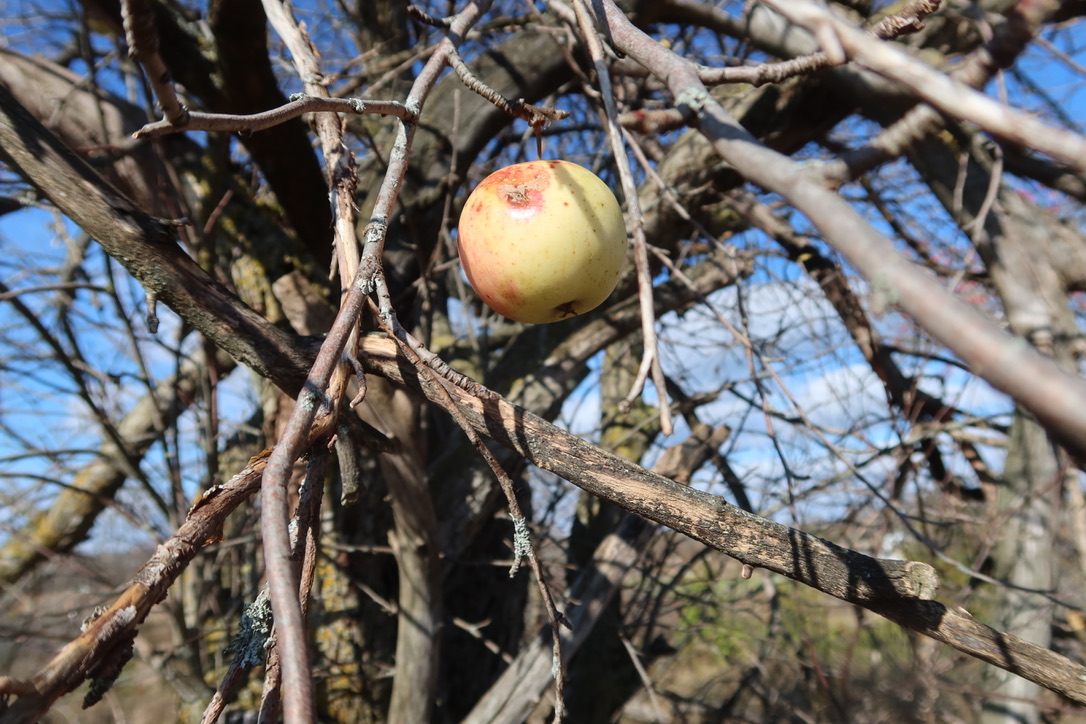
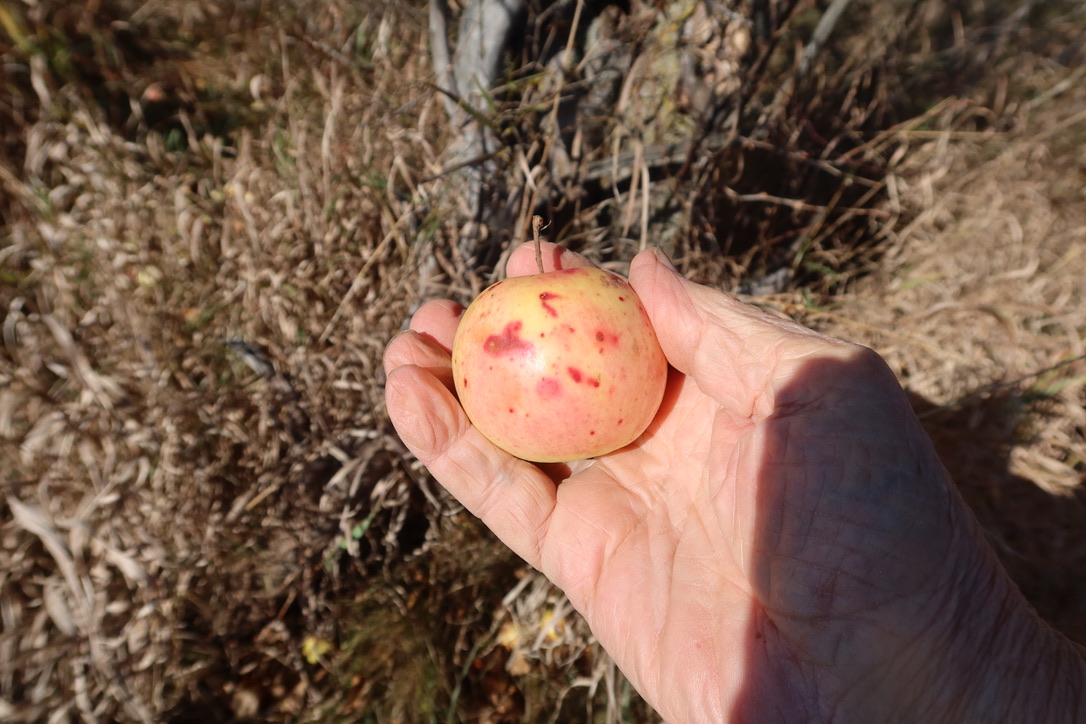
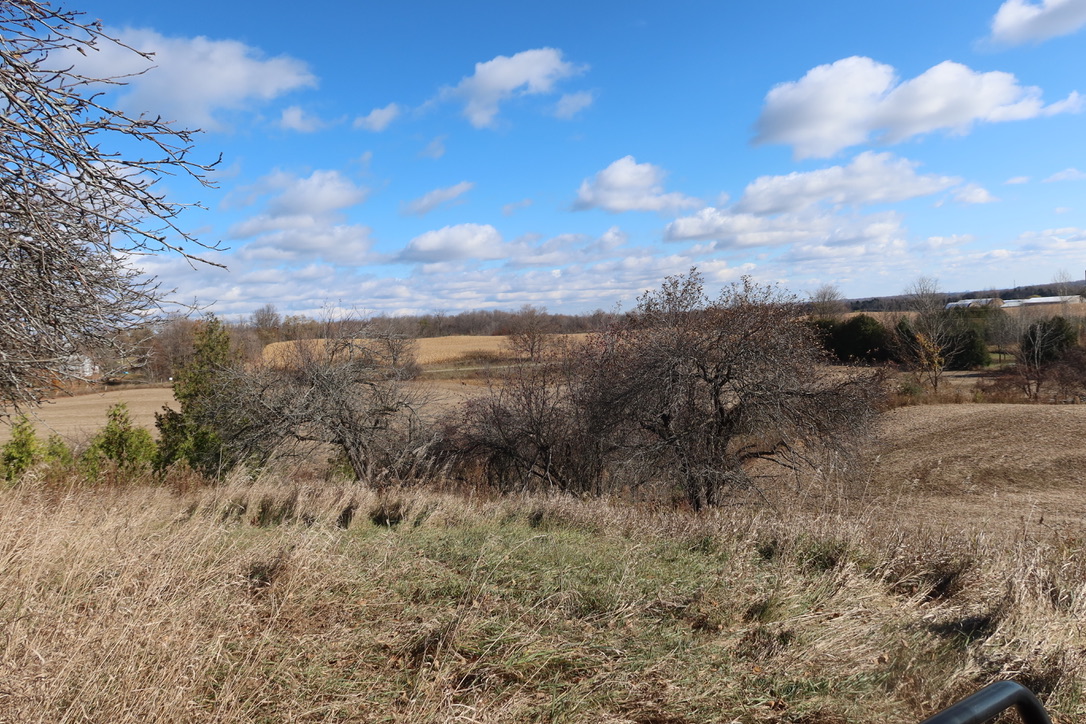
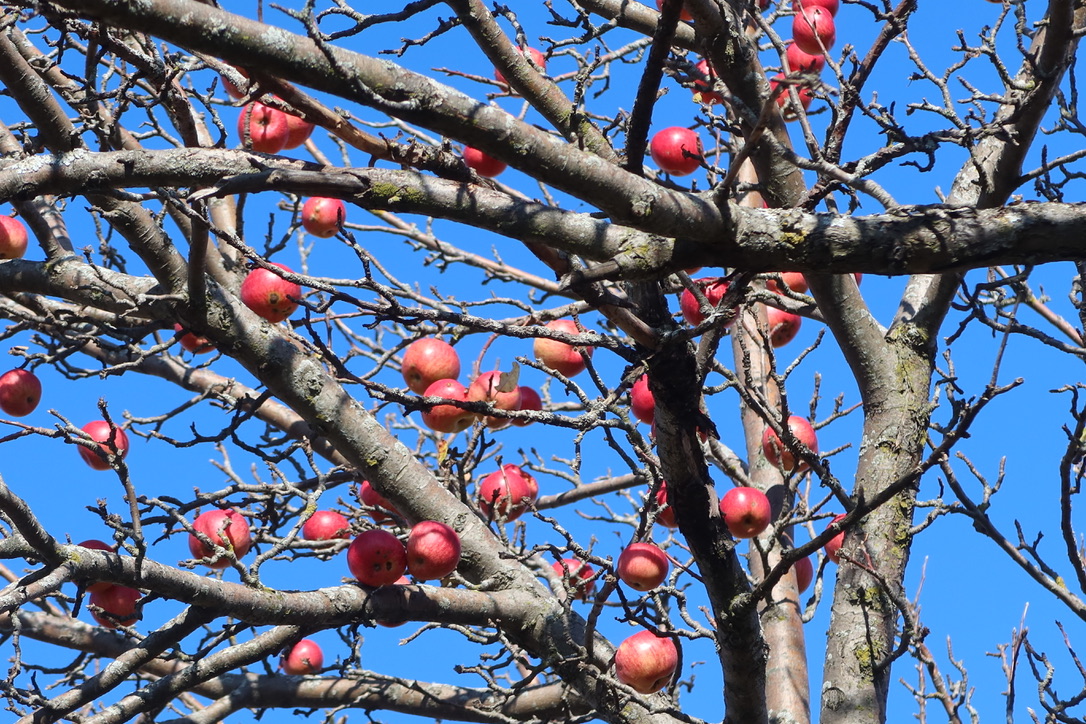
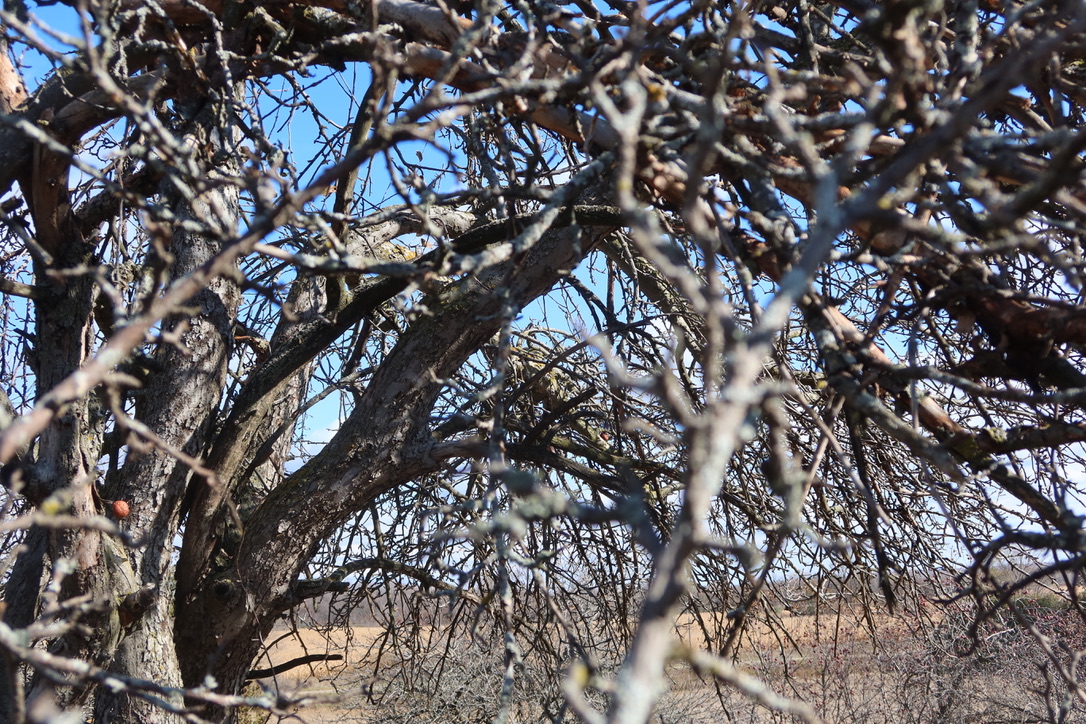
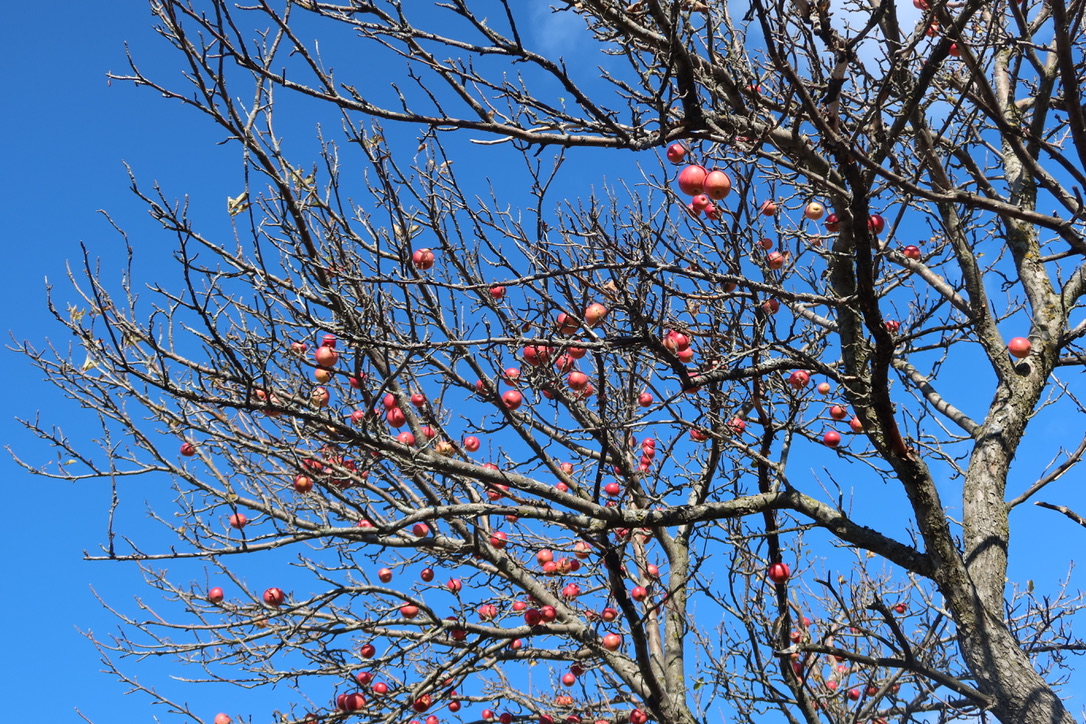
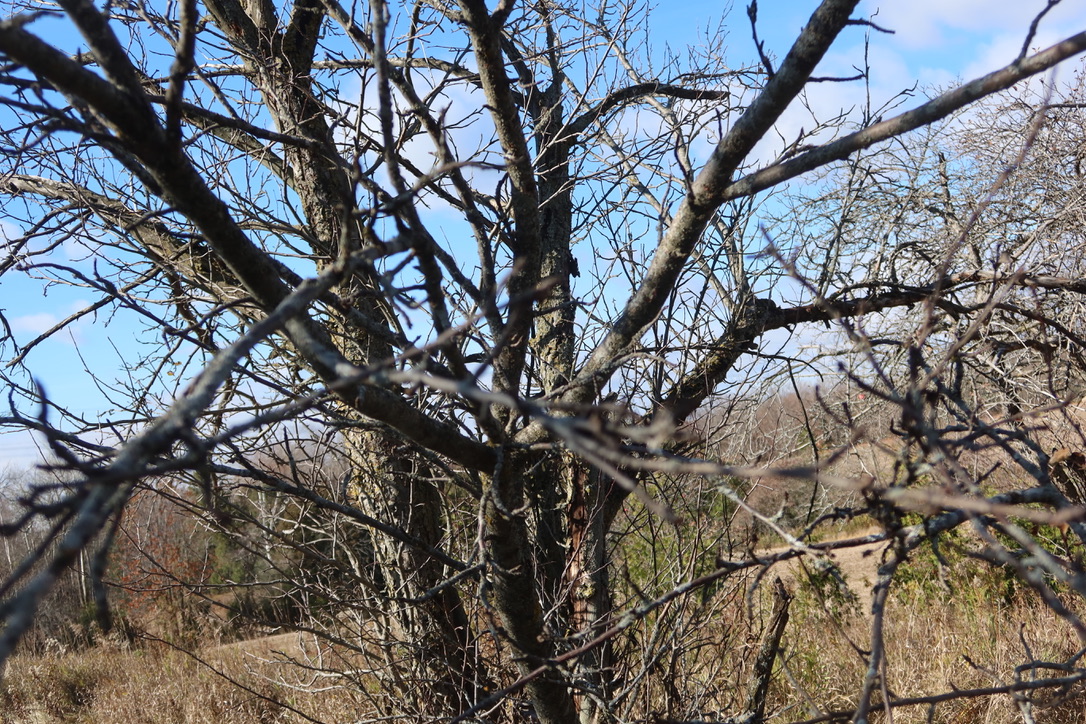
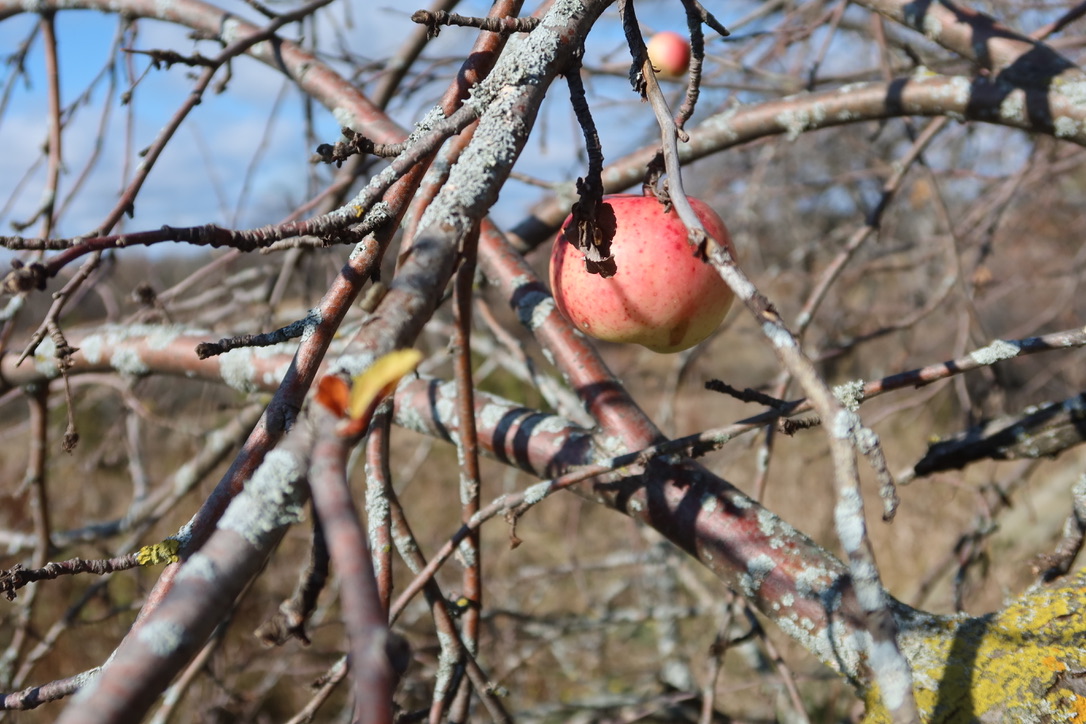

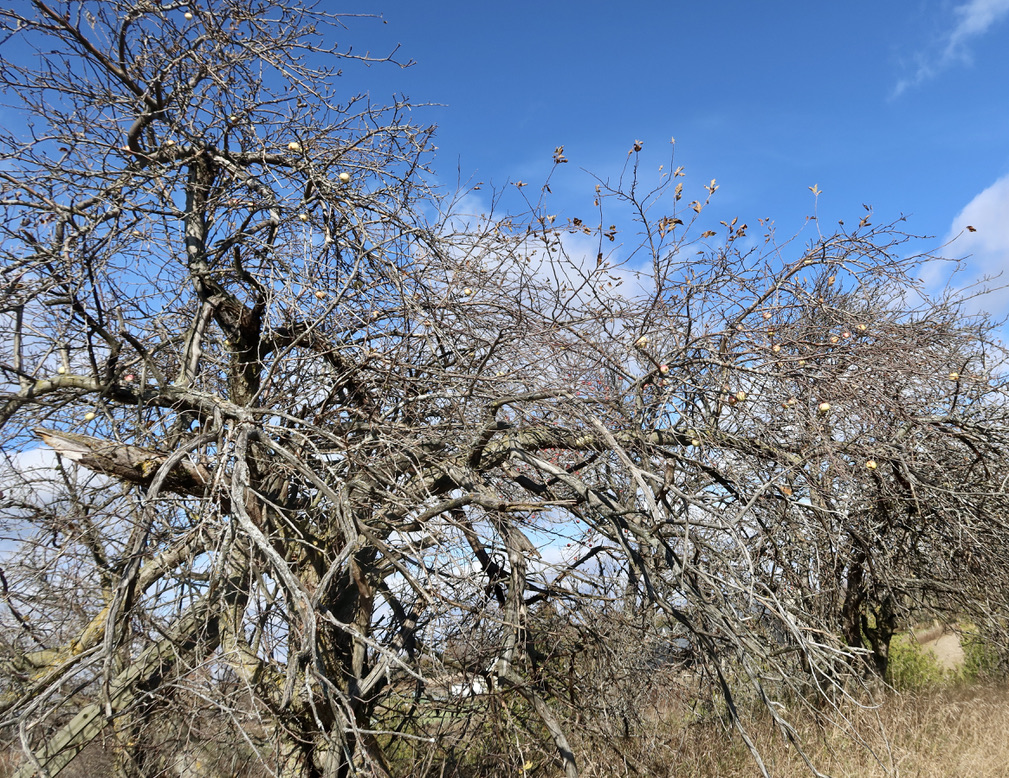
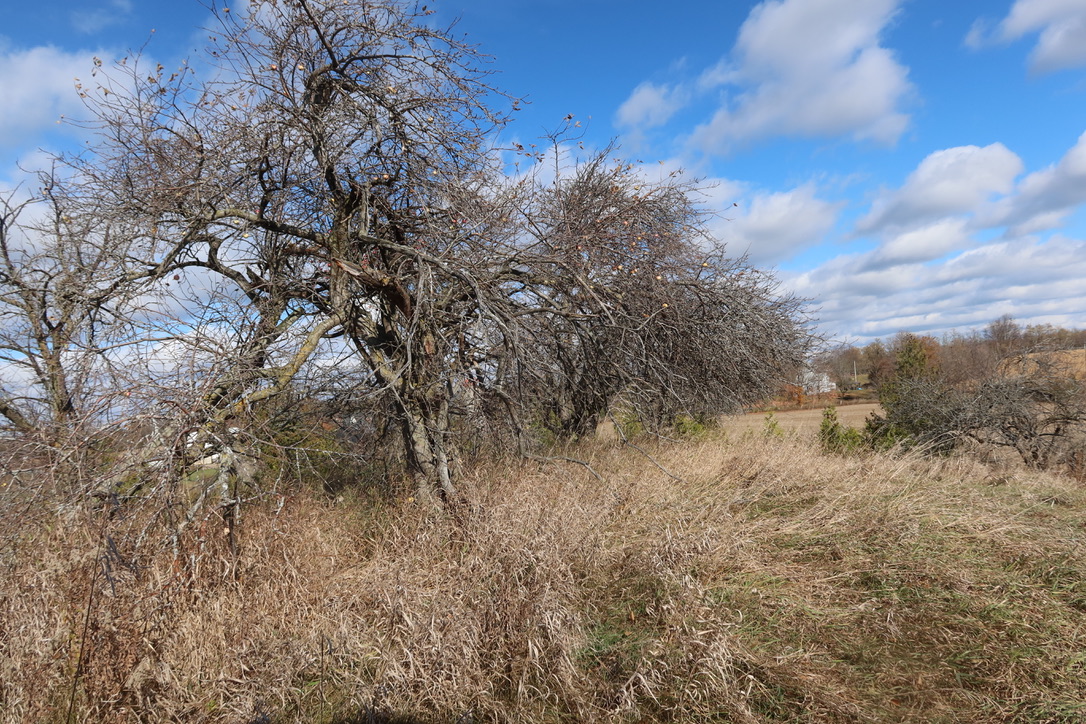
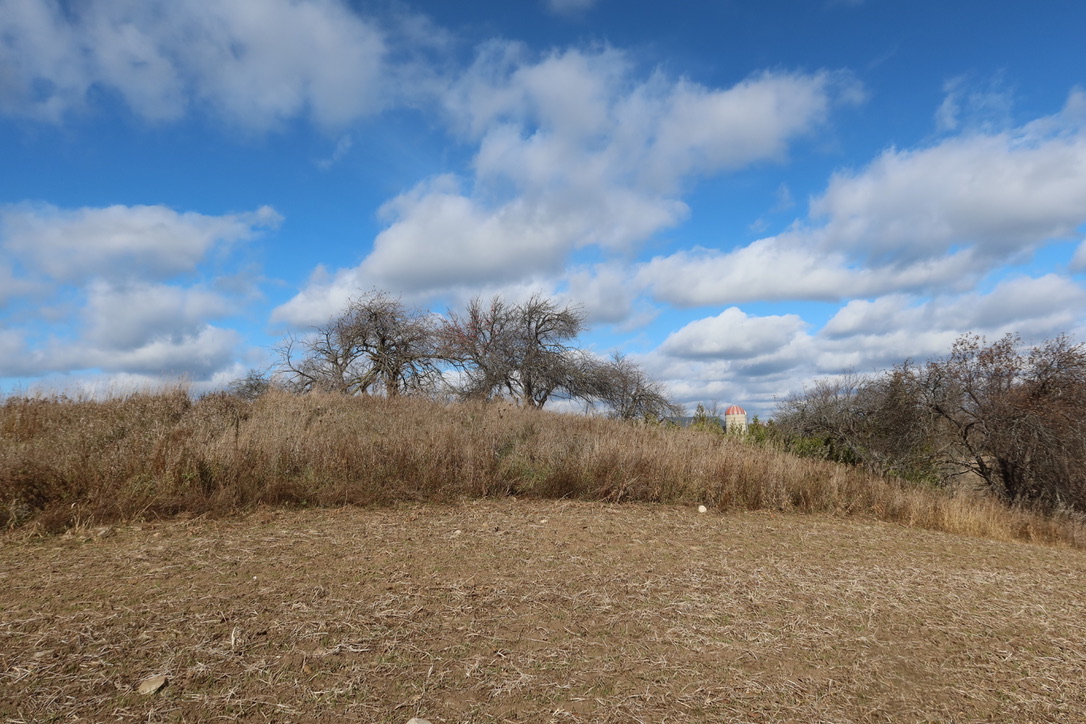

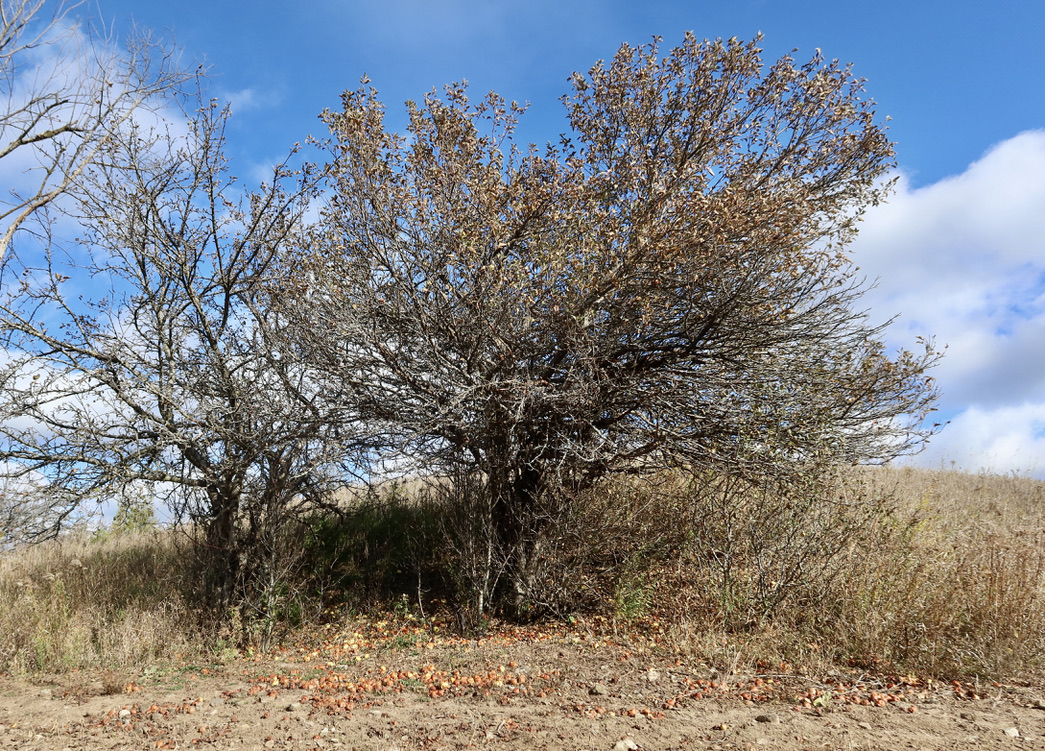 .
.Prof. Brian Husband
bhusband@uoguelph.ca
Apple trees – and the fruit and seeds that grow on them – are produced only through mating of two genetically different varieties. That means feral apples are combinations of past varieties. Two distinct feral trees can also mate with each other, as can a feral tree with a commercial variety.
Feral apples were long suspected to be hybrids between commercially grown species and a native crabapple tree, but this study found that not to be the case.
 marvel-b1-cdn.bc0a.com/f00000000209359/news.uoguelph.ca/wp-content/uploads/2019/10/thumbnail_rareApple012DSC_3973crped-100×150.jpg 100w, marvel-b1-cdn.bc0a.com/f00000000209359/news.uoguelph.ca/wp-content/uploads/2019/10/thumbnail_rareApple012DSC_3973crped-40×60.jpg 40w, marvel-b1-cdn.bc0a.com/f00000000209359/news.uoguelph.ca/wp-content/uploads/2019/10/thumbnail_rareApple012DSC_3973crped.jpg 426w” sizes=”(max-width: 200px) 100vw, 200px” be_marvel=”1″ style=”box-sizing: border-box; height: auto; max-width: 100%; vertical-align: middle;”>
marvel-b1-cdn.bc0a.com/f00000000209359/news.uoguelph.ca/wp-content/uploads/2019/10/thumbnail_rareApple012DSC_3973crped-100×150.jpg 100w, marvel-b1-cdn.bc0a.com/f00000000209359/news.uoguelph.ca/wp-content/uploads/2019/10/thumbnail_rareApple012DSC_3973crped-40×60.jpg 40w, marvel-b1-cdn.bc0a.com/f00000000209359/news.uoguelph.ca/wp-content/uploads/2019/10/thumbnail_rareApple012DSC_3973crped.jpg 426w” sizes=”(max-width: 200px) 100vw, 200px” be_marvel=”1″ style=”box-sizing: border-box; height: auto; max-width: 100%; vertical-align: middle;”>After comparing the genes of 578 naturalized feral trees to those of 156 non-feral varieties, as well as some ornamental species, the researchers discovered feral varieties originate strictly from commercially grown species. The study revealed parents of many feral apple trees comprise nine heritage cultivars — all varieties grown before 1900 — that accounted for 72 per cent of the identified parental lineages in the analysis.
“The origin of feral trees wasn’t so much the commercial apples fertilizing native crabapple, but rather these escaped apples that were now out there and growing wild,” said Husband. “The legacy of these old cultivars, some of which are no longer in production, reside in the mixed genomes of these wild apples.”
This finding provides insight into why feral apples have the strong taste that hard cider producers are after.
Over the last century or more, the Canadian apple industry has focused on the fresh market and eating apples, which are not ideal for cider, said Husband.
“Few suitable cider varieties are currently available in Ontario, so cider producers have begun looking at feral apples because they have the right taste.”
Cronin said the characteristics of feral populations may resemble varieties of apples that were grown hundreds of years ago by Ontario cider makers.
“The interesting flavours and aromas found in feral apple fruit might appeal to the Ontario apple industry in creating unique cider beverages,” he said. “There is a vast trove of untapped genetic potential in the natural landscape of southern Ontario that could be used to enhance or diversify the commercial cider industry.”
Some cider producers have begun mapping and evaluating unique apple strains found growing in abandoned orchards, hedgerows and historical properties, looking for those that are suitable for making hard cider, Husband added.
“There is definitely a growing interest in feral apples. Cider producers are looking for interesting flavours, and feral apples with heritage traits may be just what they are looking for.”
